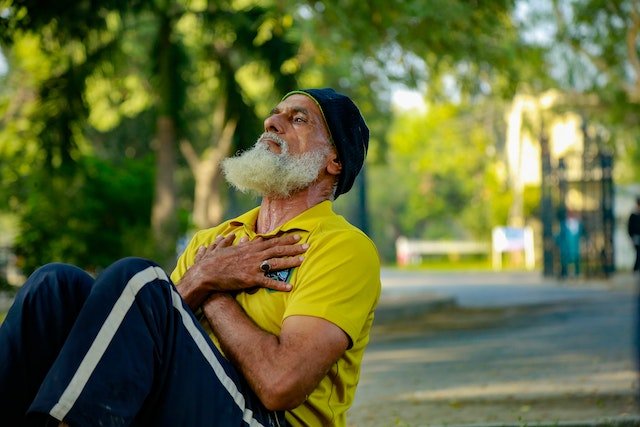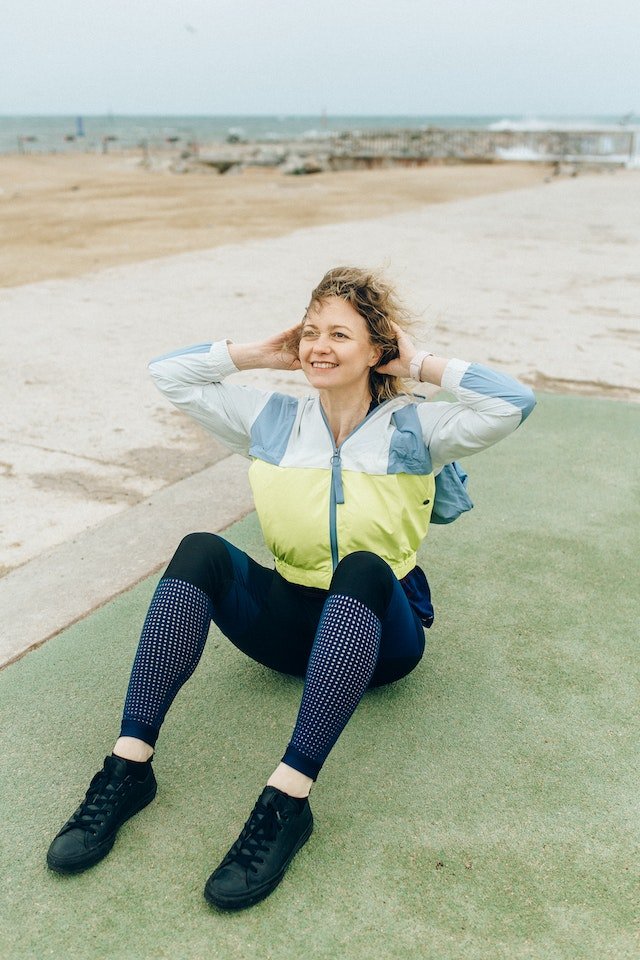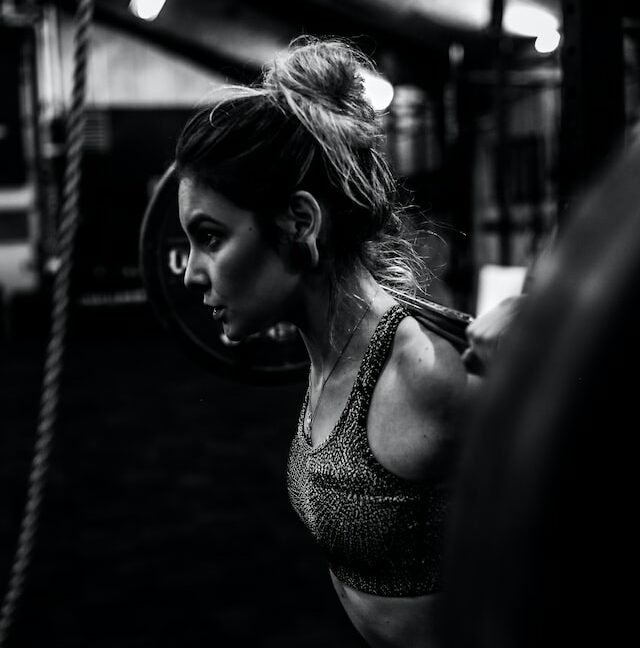
Why Do My Ribs Hurt After Doing Sit Ups? 12 Vital Things To Consider
If you’ve been doing sit-ups and have been experiencing rib pain, you’re not alone. Many people experience this same issue.
Many people experience this type of pain after working their abs. The good news is that there are some things you can do to help alleviate the pain, as it can be frustrating and interfere with your workout routine.
First, it’s important to understand why this pain occurs, but what causes it and how can you prevent it. Keep reading to find out.
Why do my ribs hurt after doing sit-ups?
The pain you’re experiencing is likely because you’re using poor form when doing sit-ups, or that it’s a new exercise and your body is reacting to the new stimulus. When doing sit-ups, it’s important to use proper form to avoid putting unnecessary strain on your body – including your ribs. In addition, if you’re not breathing correctly when doing sit-ups, this can also contribute to the pain you’re feeling in your ribs. In addition, be sure to warm up before your workout and cool down afterwards. Intercostal muscles, which are located between your ribs, may be contributing to the pain you’re feeling. These muscles are connected to your abs and can become strained when doing sit-ups. If you’re not careful, you may be putting too much pressure on these muscles and they can become strained and painful when they’re not properly warmed up or used to doing the exercise. Another reason which may sound silly is that your clothes may be too tight. If your clothing is constricting your movement, it can put additional strain on your body and cause pain. Finally, if you’re doing too many sit-ups or not giving your body enough time to recover between workouts, this can also lead to pain. It’s important to understand the difference between soreness and pain, as soreness is normal after a workout, but pain is not. If you’re experiencing true pain, it’s important to take a break from exercising and give your body time to recover. If you’re still experiencing pain after taking these precautions, it’s important to see a doctor or physical therapist to rule out any other potential causes of your pain.
Muscles used in sit-ups
There are several muscles used when doing a sit-up, but the primary muscle worked is the rectus abdominis. This muscle is commonly referred to as the “six-pack muscle” as it’s the muscle that gives you definition in your abs.
The rectus abdominis is a long, flat muscle that runs vertically along the front of your abdomen. This muscle is responsible for flexing your trunk, or bending at the waist. In addition to the rectus abdominis, the oblique muscles, which are located on the sides of your abdomen, and the transverse abdominis, which is a deep muscle that wraps around your trunk, are also used when doing sit-ups.
While all of these muscles are important for a strong, defined core, the rectus abdominis is the most likely to be strained when doing sit-ups with poor form or without warming up properly. When this muscle becomes strained, it can cause pain in the ribs and surrounding area.
Doing something new
If you’re new to sit-ups or have recently started incorporating them into your workout routine, it’s not uncommon to experience pain in your ribs, as your body is not used to the exercise.
This type of pain is usually temporary and will go away as your body gets used to the new exercise. In the meantime, be sure to use proper form and take breaks if you start to feel pain.
DOMS, or delayed onset muscle soreness, is a type of pain that can occur 24-48 hours after a new or strenuous workout. This pain is different from the pain you may feel immediately after doing sit-ups, as it’s not caused by strain on the muscles, but rather by the muscles repairing themselves after being worked.
DOMS is usually not severe and should go away within a few days. However, if the pain is severe or lasts longer than a few days, it’s important to see a doctor to rule out any other potential causes of your pain.
DOMS would be very unlikely to cause pain in your ribs specifically, but if you’re experiencing pain in other muscles, it’s possible that the pain is related to DOMS.
Warming up and cooling down
Warming up before your workout and cooling down afterwards is important for preventing pain in your muscles and joints.
Warming up helps to increase blood flow to your muscles and prepare them for the upcoming exercise.
Cooling down helps to reduce inflammation and speeds up the recovery process.
When doing sit-ups, be sure to warm up with some light cardio and dynamic stretching before your workout. After your workout, cool down with some light cardio and static stretching.
If you don’t warm up or cool down properly, you’re more likely to experience pain in your muscles and joints. In addition, not cooling down properly can lead to DOMS.
Certain yoga poses can also help to stretch and strengthen the muscles used in sit-ups. These poses include the child’s pose, the cat-cow pose, and the Cobra pose.
Practising these poses regularly can help to improve your form and prevent pain when doing sit-ups.

Connective tissue
Free nerve endings that detect pain are located in connective tissue covering of ribs called the periosteum.
These free nerve endings are important for sensing when we have sustained an injury so that we can protect the area and allow it to heal.
Sit-ups can irritate these nerves and cause pain in the ribs. The pain is usually temporary and will go away on its own.
However, if the pain is severe or lasts for more than a few days, it’s important to see a doctor to rule out any other potential causes of your pain
Several nerves run through the abdominal muscles, including the ilioinguinal nerve and the rectus abdominis nerve.
These nerves can become compressed or irritated when the abdominal muscles are strained, which can cause pain in the ribs and surrounding area.
If you’re experiencing pain in your ribs after doing sit-ups, it’s important to see a doctor to rule out any other potential causes of your pain.
Related: Why Do Sit Ups Hurt My Thighs? 12 Crucial Things To Consider
Intercostal muscles
The intercostal muscles are located between the ribs and help to stabilise the spine.
Intercostal muscles are many different groups of muscles that run between the ribs, and help form and move the chest wall. The intercostal muscles are mainly involved in the mechanical aspect of breathing by helping expand and shrink the size of the chest cavity.
These muscles can become strained when doing sit-ups with poor form. This can lead to pain in the ribs and surrounding area.
Intercostal muscles also connect to the diaphragm, which is the muscle that helps us breathe. The diaphragm can also become strained when doing sit-ups with poor form. This can lead to pain in the ribs and surrounding area.
intercostal neuralgia is a condition that can cause pain in the ribs and surrounding area. This condition is caused by the compression or irritation of the intercostal nerves.
Intercostal neuralgia can be caused by a variety of things, including physical activity, injuries, and certain medical conditions.
One of the best ways to strengthen the intercostal muscles is by practicing yoga poses that target these muscles.
Poor form
One of the most common causes of pain after doing sit-ups is poor form.
When doing sit-ups, it’s important to use proper form to avoid putting unnecessary strain on your body – including your ribs.
Make sure you aren’t also anchoring your feet under something as this can also lead to pain in the lower back and hips.
If you are lifting your upper torso too close to your thighs, this can also put strain on the muscles and nerves in your lower back and hips, which can lead to pain.
It’s important to focus on using your abdominal muscles to lift your torso, rather than your neck and hips.
If you’re having trouble maintaining proper form, it’s best to seek out the help of a certified fitness instructor or personal trainer.
It’s also important to keep your head and neck in alignment with your spine. Tucking your chin to your chest can help to prevent strain on your neck.
Are you breathing correctly?
Another common cause of pain after doing sit-ups is incorrect breathing. When doing sit-ups, it’s important to exhale as you lift your torso and inhale as you lower it back down.
If you’re not breathing correctly when doing sit-ups, this can also contribute to the pain you’re feeling in your ribs.
Make sure you’re consciously breathing and focus on exhaling as you lift your torso and inhale as you lower it back down.
It may sound silly, but how often do you see people not breathing correctly? A lot of the time, people hold their breath when they’re doing something that’s challenging – like sit-ups.
Incorrect breathing can also contribute to pain in the lower back and hips, as well as the shoulders and neck.

Abs are connected to the rib cage
The abdominal muscles are connected to the rib cage, which is why you may feel pain in your ribs after doing sit-ups.
The abdominal muscles help to support the spine and keep the torso upright. The abdominal muscles are also involved in breathing.
When doing sit-ups, the abdominal muscles contract and put pressure on the rib cage. This can lead to pain in the ribs, especially if you have poor form or are not breathing correctly.
To avoid pain in the ribs, it’s important to use proper form and focus on exhaling as you lift your torso and inhale as you lower it back down.
Related: Why Do I Feel Weaker Instead Of Stronger Every Time I Work Out? Revive Your Gains
The volume of sit ups and how often?
How many sit-ups you’re doing and how often you’re doing them can also contribute to the pain you’re feeling in your ribs.
If you’re doing too many sit-ups, this can lead to strain on the muscles and nerves in your lower back and hips, which can then radiate to the ribs.
It’s important to build up slowly when starting a new exercise routine. If you’re doing too much too soon, this can lead to injuries.
Start with a smaller number of sit-ups and increase gradually as your body gets used to the exercise.
It’s also important to give your body rest days in between workouts. This will help your muscles to recover and prevent injuries.
Overtraining can lead to a variety of injuries, including pain in the rib area. If you’re feeling pain, it’s best to take a break from exercise and allow your body to recover.
Clothing?
The type of clothing you’re wearing can also contribute to the pain you’re feeling after doing sit-ups.
If your clothing is too tight, this can put strain on the muscles and nerves in your lower back and hips, which can lead to pain.
I know how important it is to be wearing the coolest new gym attire but sometimes comfort should be more important than style.
Wearing loose, comfortable clothing that doesn’t restrict your movement is important when exercising. This will help to avoid injuries and allow your muscles to move freely.
The same applies if you are wearing a bra which is too tight or dug in, this can cause discomfort and pain around the rib area.
Investing in some good quality, comfortable activewear will help you to avoid pain and injuries when exercising.

Do alternatives
Many people consider sit ups to be the worst exercise for your abs, and there are definitely better alternatives out there.
Crunches are a great alternative to sit-ups as they target the same muscle group but put less strain on the back and hips.
Planks are another great exercise for strengthening the core muscles. They are a great way to build up strength and endurance.
Leg raises are another good alternative to sit-ups. They target the abdominal muscles and can be done with or without weights.
Pilates and yoga are also great for strengthening the core muscles without putting too much strain on the body.
There are many different exercises that can help to strengthen the core muscles, so there’s no need to do sit-ups if they’re causing you pain.
If you are experiencing pain after doing sit-ups, it’s best to stop and try another exercise that doesn’t cause pain.
Related: Do You Squeeze Your Muscles Whenever You Exercise? 12 Crucial Factors To Maximise Gains
Final thoughts…
If you’re experiencing pain in your ribs after doing sit-ups, it’s important to take a break and try another exercise.
There are many different exercises that can help to strengthen the core muscles without causing pain.
It’s also important to focus on proper form and breathing when doing sit-ups, and to warm up before your workout and cool down afterwards.
If you’re still experiencing pain after trying these things, it’s best to see a doctor or physiotherapist to rule out any other underlying conditions.
Have you experienced this problem and how did you get back on track? Let us know in the comments below.



Hі there, Ӏ check yoᥙr blog like every week.
Your humour and style iѕ awesome, keep it up!
Hi Racing,
Thank you for taking the time to leave this comment. It means a lot when you work hard to build something and someone can appreciate what you’re trying to do!
Hope you have had a great weekend and please keep visiting the site and spread the word!
Take care and speak soon.
Lee